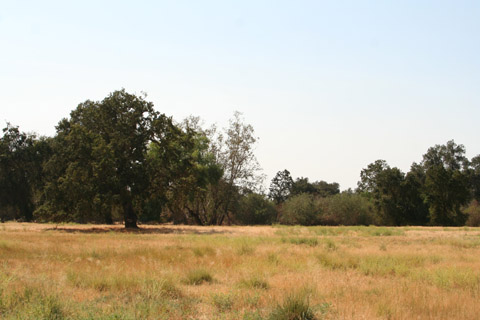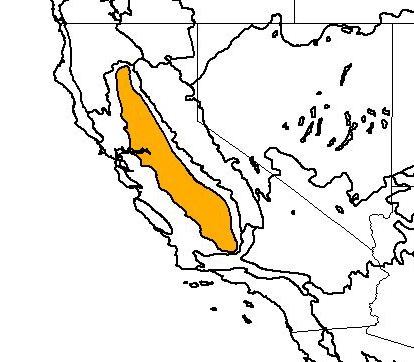
Kaweah Oaks Preserve, Tulare Co., California
Bioimages home (click on an image to enlarge)
view
this page in its intended navigation context
California Central Valley grasslands
(WWF
ecoregion NA0801)

Kaweah Oaks Preserve, Tulare Co., California

Source of bioregions data:
Olson, D. M. and
E. Dinerstein. The Global 200: Priority ecoregions for global conservation. (PDF
file) Annals of the Missouri Botanical Garden 89:125-126.
Distinctiveness (1=highest,4=lowest): 2 (regionally
outstanding)
In its original state, it was one of the most diverse and distinctive grasslands
in temperate North America. It contained prairies, savannas, riparian
woodlands, marshes, and vernal pools. A number of endemic species of
mammals, birds, reptiles, and amphibians are present in the region.*
Conservation Status (1=most endangered, 5=most
intact): 1 (critical)
Nearly all of the habitats in this ecoregion have been altered. Native
grasses have been replaced by introduced species. 66% of vernal pools have
been destroyed and less than 6% of marshes remain. Only about 1% of
riparian woodlands are intact.*
Associated habitats
Riparian habitat, Feather River, near Nicolaus, Sutter Co., California

(c) 2005 Daniel P.
Duran
hires
Oak Savanna, Kaweah Oaks Preserve, Tulare Co., California



This preserve is one of the last valley oak riparian forests in the San Joaquin
Valley.
hires
hires
hires
Agriculture, near Fresno, Fresno Co., California


Intensive agricultural development has destroyed 94% of the freshwater
wetlands.
hires
hires
* Ricketts, T.H., E. Dinerstein, D.M. Olson, C.J. Loucks, et al. (1999) Terrestrial Ecoregions of North America: A Conservation Assessment. World Wildlife Fund - United States and Canada. Island Press, Washington, D.C. pp. 277-280.
Except as noted, images copyright 2002-2011 Steve Baskauf - Terms of use